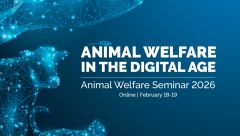Genetics and fast growth: The skeletal, muscle and other bodily systems of fast-growing meat chicken breeds are unable to support the rapid growth for which they’ve been genetically selected. This rapid growth can lead to health and welfare issues including lower activity levels, contact dermatitis, leg disorders, increased susceptibility to stress, cardiovascular diseases, and metabolic disorders.
This is a particularly important issue, because while many other problems - such as poor housing and inadequate space – can be addressed over the life of the chicken, we are limited in what we can do to mitigate the inherent welfare impacts of these genetic selection decisions.
Space allowance indoors: Higher stocking densities for older meat chickens limit their ability to easily move about and perform natural behaviours, which can increase the risk of contact dermatitis, lameness, and heat stress. The current legal maximum stocking density for meat chickens in Australia is 40kg/m2.
Indoor housing: Inadequate ventilation in sheds results in poor air quality, increasing the risk of heat stress, ammonia toxicity, and death. Artificial lighting is used to mimic daylight and dark periods, but must be appropriate (e.g. intensity, adequate dark time for rest). Poorly maintained and wet litter in a shed can increase the risk of disease and discourage natural behaviours (such as dustbathing and foraging).
Outdoor access: Free-range meat chickens are required to have access to an outdoor area with shade and shelter once they are fully feathered. Meat chickens with access to a good quality outdoor area have been shown to have improved leg health, display more natural behaviours, and show less fear, but can have higher mortality rates than meat chickens in indoor systems. The majority of meat chickens in Australia are farmed in indoor-only systems.
Euthanasia: Meat chickens may be euthanised if they’re identified as weak, sick, or injured and unlikely to recover. The most common method of euthanasia for meat chickens is manual cervical dislocation (quickly stretching the bird’s neck to dislocate the first cervical vertebrae from the skull), but this may not result in an immediate loss of consciousness and so may cause pain and distress prior to death.
Slaughter: In Australia, meat chickens are stunned prior to slaughter to ensure they are unconscious and don’t experience pain during slaughter and prior to death – this is a very important part of humane slaughter. The two main stunning methods for meat chickens are electrical waterbath stunning or controlled atmosphere stunning (CAS) with carbon dioxide gas. Both have welfare risks, but electrical waterbath stunning systems have several inherent animal welfare risks, including the fact that birds need to be shackled upside down while conscious.








